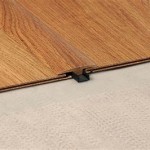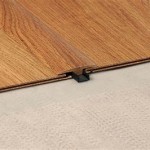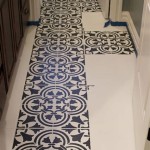Laying Floating Floor Over Tiles In Bathrooms: A Comprehensive Guide
Renovating your bathroom can be a daunting task, especially when it comes to choosing the right flooring. If you're considering laying floating floor over tiles, this guide will provide you with all the essential aspects you need to know to ensure a successful installation.
1. Preparation
Before you begin, it's crucial to prepare your bathroom floor. This includes removing any existing flooring, such as carpets or rugs, and cleaning the surface thoroughly. The tiles should be in good condition, free of cracks or loose grout. If any repairs are necessary, they should be addressed before proceeding.
2. Underlayment
Underlayment is a thin layer of material that goes between the tiles and the floating floor. It serves several purposes, including reducing noise, providing insulation, and evening out any imperfections in the subfloor. Choose an underlayment that is compatible with the type of floating floor you're using.
3. Floating Floor Planks
Floating floor planks come in various materials, such as laminate, vinyl, and engineered wood. Select planks that are moisture-resistant and suitable for bathroom environments. Determine the layout and measure the space to calculate the amount of planks you'll need.
4. Installation
Laying the floating floor is a straightforward process. Begin by placing the first plank in a corner of the room and work your way outwards. Interlock the planks together by angling the edges and pressing them down. Continue adding planks until the floor is complete.
5. Trimming and Edging
Once the floating floor is laid, you'll need to trim any excess planks and install edging around the perimeter. Use a jigsaw or circular saw to make precise cuts. Edging can be made of the same material as the planks or a contrasting material for a decorative touch.
6. Expansion Gaps
Floating floors expand and contract with changes in temperature and humidity. To prevent buckling or damage, it's essential to leave small expansion gaps around the edges of the room and around any obstacles, such as toilets or sinks.
7. Moisture Resistance
Bathrooms are prone to moisture, so it's crucial to choose a floating floor that is water-resistant or waterproof. Laminate floors with a high AC rating or vinyl floors with a moisture barrier are ideal options. Regular maintenance, such as wiping up spills promptly, will further enhance the floor's longevity.
By following these essential aspects, you can successfully lay floating floor over tiles in your bathroom, creating a stylish and durable surface that will enhance the functionality and aesthetics of your space.

How To Install A Floating Tile Floor

Installing Laminate Tile Over Ceramic Diy Floors Wonderhowto

How To Install Vinyl Plank Floors In A Bathroom Over Tile

How To Install Vinyl Plank Flooring In A Bathroom Fixthisbuildthat

How To Install Vinyl Plank Floors In A Bathroom Over Tile

What Type Of Flooring Can You Install Over Ceramic Tile

Can You Lay A Floating Floor Over Vinyl Or Carpet Rolls

Install Laminate Flooring Over Ceramic Tile

How To Cover Up Tile In Bathroom

Can You Lay A Floating Floor Over Vinyl Or Carpet Rolls
Related Posts








